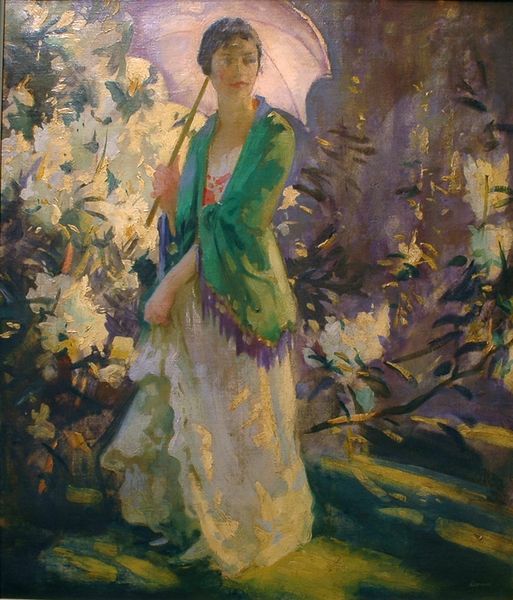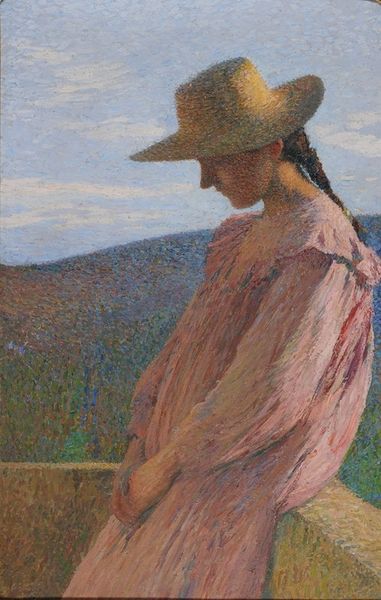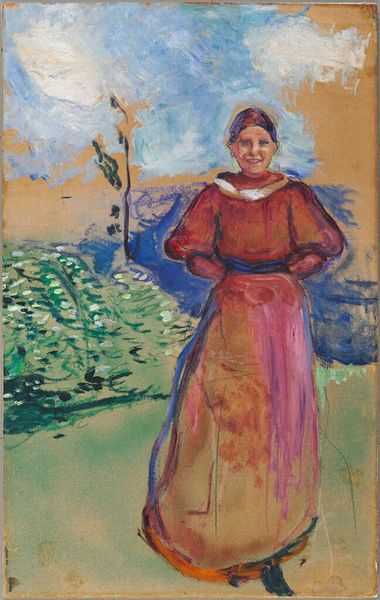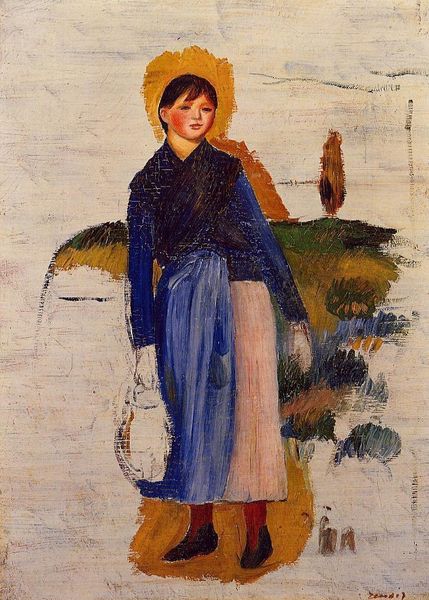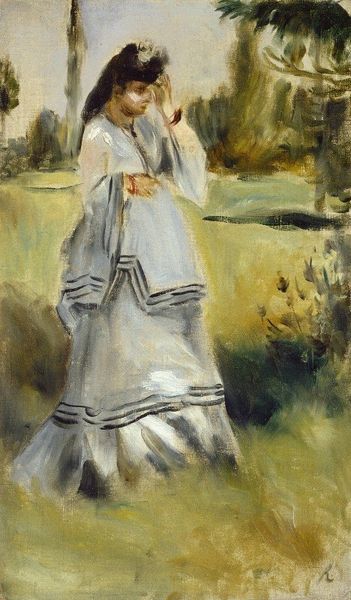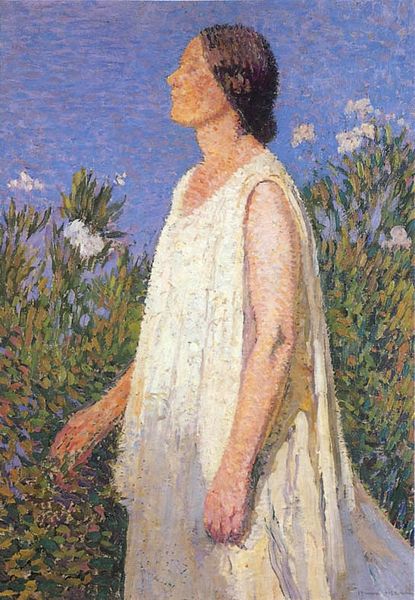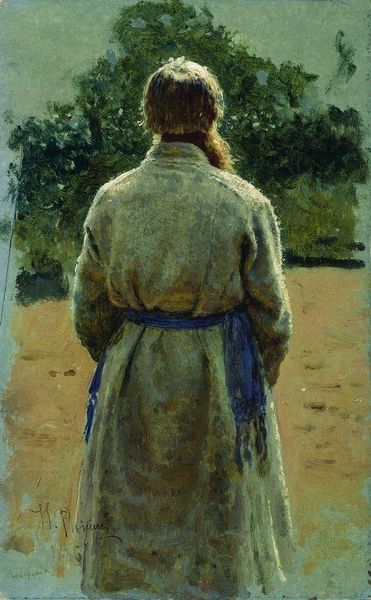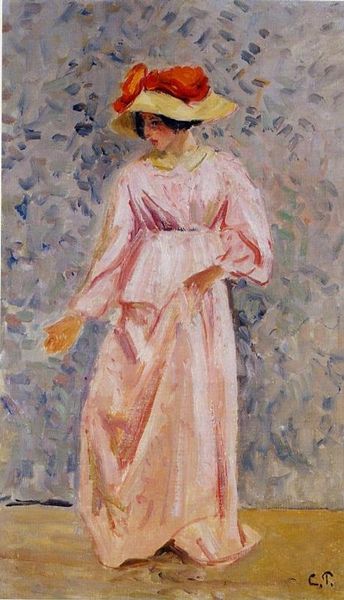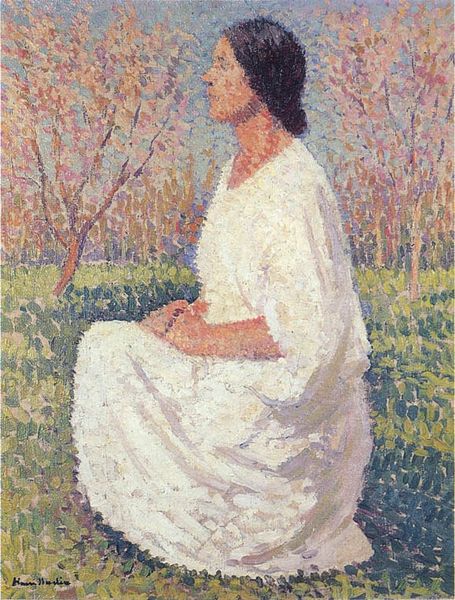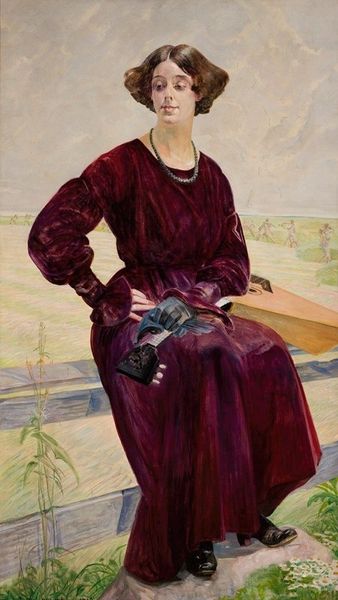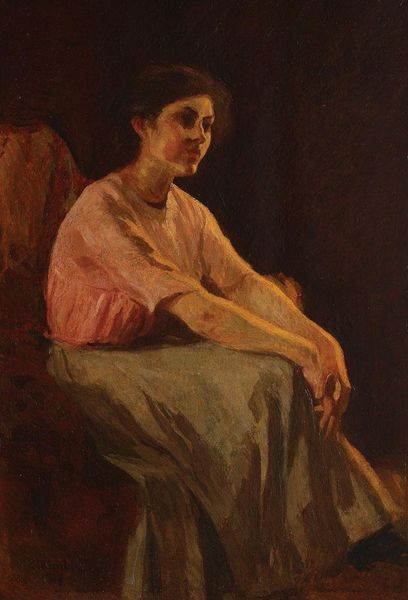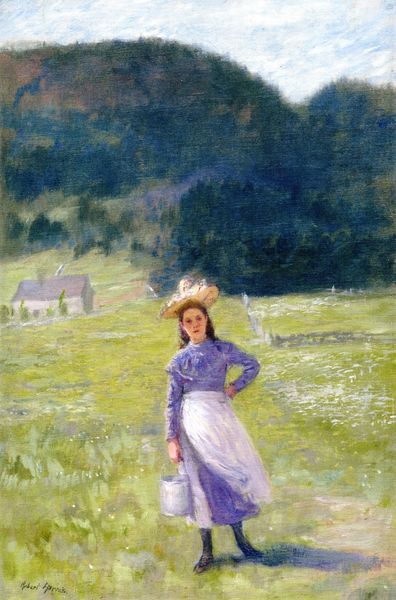
Copyright: Public domain US
Editor: This is Augustus John’s “Dorelia in a Landscape,” painted in 1910. It's oil paint, and the landscape almost seems to swallow the figure. The woman has such a serious, almost mournful look. What do you see in this piece? Curator: I see the visual manifestation of cultural memory. Dorelia stands almost like a classical statue, echoing ideals of beauty, yet she’s dressed in a way that suggests a modern bohemian sensibility. Notice how the landscape itself becomes an extension of her psychological space; those winding roads and rolling hills aren't just background. They speak to a journey, a life lived. Editor: So, the landscape reflects her inner state? Curator: Precisely. And consider that crimson object she holds in her hands. Is it a flower? A ribbon? Red, of course, symbolizes passion, life force. What might that intense, small, saturated fleck suggest in contrast to the subdued palette surrounding her? Editor: Maybe she's holding onto a memory, or a lost love? The red stands out, definitely a focal point. It’s juxtaposed against the more muted, earthy tones in the painting, and against the winding landscape. Curator: Indeed! John is using color here to convey symbolic meaning but also to prompt us to participate actively in assigning personal meanings based on our memories. Where might *you* find resonance within this painted tableau? Editor: That’s helpful to consider! I'm now considering this work as more than just a portrait; it's an exploration of identity within a landscape of cultural and personal meaning. Curator: Exactly. Visual symbols become conduits to shared experience, triggering memories that extend beyond a single painted canvas and time period.
Comments
No comments
Be the first to comment and join the conversation on the ultimate creative platform.

